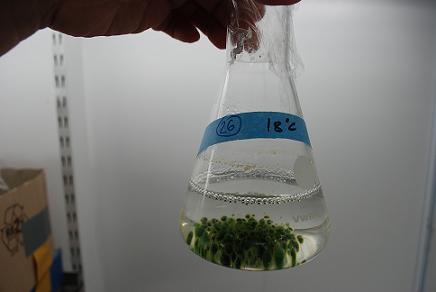Introduction

Global warming
Responses of species composition and biological diversity to warming warrant special attention in the light of the ongoing global climate change (Parmesan & Yohe 2003, Root et al. 2005). On one hand, global warming is predicted to be one of the major drivers of future species extinctions and diversity loss (Millennium Ecosystem Assessment 2005). The ecosystems are changing at accelerating speed and it is a matter of strong debate whether species adaptation can keep up with these fast changes. Thus, warming might reduce compositional stability and increase temporal species turnover. On the other hand, diversity itself is supposed to work as an insurance against changing conditions, i.e. more diverse communities are supposed to show faster recovery due to higher response diversity (Elmqvist et al. 2003). Therefore, the link between global change and biodiversity is important from two perspectives: how does global change drive diversity and how does diversity affect ecosystem responses to global change.
The water temperature of the Baltic Sea
The normal maximum summer temperature of the Baltic Sea water is around 20°C (Johansson 1996). This is predicted to increase in the future, and therefore cooling-water discharge areas from the Swedish nuclear power plants Forsmark and Oskarshamn are ideal places to study possible effect of climate change on Baltic Sea biological communities (Snoeijs & Prentice 1989). In the field area of this study (Forsmark), water temperature and flow rate are increased by the cooling water flow through the nuclear power reactors. The faster flow of the water and the increased temperature prevent the formation of ice in the vicinity of the power plant. Nutrient supply for algal growth is also increased due to the faster water flow rates (Snoeijs & Prentice 1989). In areas without cooling water discharge the evidence for distributional changes of aquatic species is limited and based on correlation between species abundance and natural changes of sea water temperature, but in such areas seasonality cannot be separated from temperature anomalies (David et al. 2004).
The benthic system
Previous studies have shown that benthic algal communities respond immediately to temperature change in the environment. Variable temperature anomalies are responsible for large changes in the species composition of algal communities, as different species have different responses to temperature. Some species can tolerate low temperature and ice cover, while others may lose viability in cold water. Alternatively, some species can tolerate high temperature stress, while some species may suffer at high temperatures (Odum 1971). Cyanobacteria has a wide range of temperature tolerance, but they grow well in warmer temperature and growth is extremely slow in low temperature (Evonne et al. 1997). Green algae and cyanobacteria are often favored by warmer temperature, while red and brown algae prefer colder environments. For example, the green alga Cladophora glomerata grows well in temperatures up to 25°C. Therefore it is expected that the Baltic seawater will never be lethal for this green algal species (Snoeijs & Prentice 1989). Cladophora is often overgrown by microalgal epiphytes, especially by diatoms, but also by microbial organisms such as bacteria, cyanobacteria, archaea and viruses.
Physiological responses of photosynthetic organisms to temperature and copper stress
Compared to terrestrial plants, aquatic plants often have a lower tolerance to temperature stress because the aquatic environment has a more thermal stability (Odum 1971). Physiological processes of biological entities are induced by increased temperature and their physiological characteristics can be inhibited due to too high temperature (Begon et al. 1990). Photosynthetic light-harvesting is a physical process which is not dependent on temperature, but the chemical process of carbon fixation depends on temperature. Oxidative stress in plants can be induced by an imbalance between these processes and antioxidants, such as carotenoid quenchers, are mobilized (Taiz & Zeiger 1991). The anti-fouling paints used in boats and ships include copper and the leaching of those paint have toxic effects on the physiology of photosynthetic organisms (Jenny et al. 2010). Therefore, the amount of stress on algae is exposed to can be estimated from its carotenoids: chlorophyll a ratio.
Aim & Hypothesis
In this MSc project I aim to answer the question how the growth and distribution of photosynthetic organisms in the upper coastal zone of the northern Baltic Sea is affected by increased temperature. I focused on four epilithic species that are dominant in the Forsmark area. I approached this question with both field and laboratory studies.The hypothesis of the project are:
1.The abundances of the cyanobacterium Rivularia atra, the green algae Cladophora glomerata and Ulva spp. and the red alga Ceramium tenuicorne increase in abundance with higher water temperature.
2. Rivularia increases in growth with experimental exposure to higher water temperature.
3. Rivularia decreases in growth with experimental exposure to copper.
4. Growth of Rivularia is inversely related to defence mechanisms against oxidative stress.
Responsible for this page:
Director of undergraduate studies Biology
Last updated:
02/10/13
